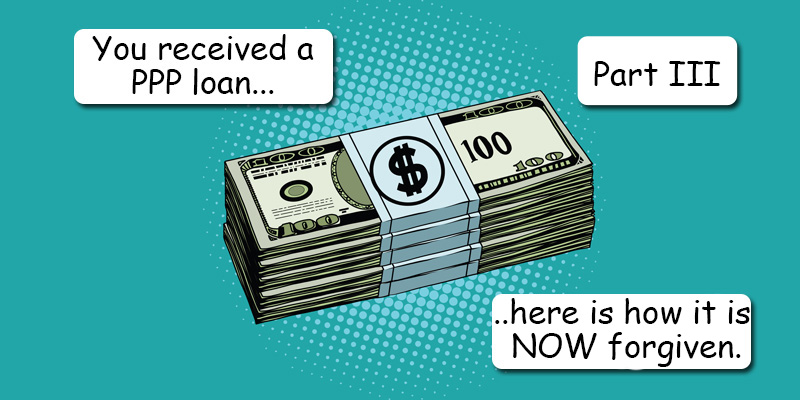Yes, you have read that correctly. It is the PPP Flexibility Act of 2020. Why the need to include “2020?” Are they expecting a PPP Flexibility Act of 2021, 2022, and so on? The Paycheck Protection Program itself was not designed to last beyond 2020, so hopefully this is not a bad sign of what is ahead. Let’s take a moment to see how this latest Act impacts those who will be looking for forgiveness on their loan. I will assume you already understand basic PPP terms such as ‘payroll costs,’ ‘covered period,’ and FTE, but if you need a refresher, review my previous articles on loan forgiveness I and II.
- The current 75% payroll costs/25% non-payroll costs spending requirement would change to a ratio of 60% on payroll costs, and no more than 40% on non-payroll costs. There also appears to be a new requirement that if any less than 60% of the loan amount is spent on payroll costs, NONE of the loan would be forgiven. This is an interesting twist and we may see more develop as key senators are already working to pursue technical fixes. Oh boy, more changes! -UPDATE 6/8/2020 The SBA states “if a borrower uses less than 60 percent of the loan amount for payroll costs during the forgiveness covered period, the borrower will continue to be eligible for partial loan forgiveness, subject to at least 60 percent of the loan forgiveness amount having been used for payroll costs.” Read the bulletin here. An example of the calculation is if your loan is $20,000 and you only spend $10,000 on payroll costs over the 24 weeks, you would divide $10,000 by .6 to arrive at $16,666.67 as forgivable. Of course providing you have passed the other requirements of maintaining your FTE count and wage levels.
- The covered period of the forgivable use of the funds would extend from the current eight-week period to 24 weeks or until December 31, 2020, whichever comes first. For those who want to keep the eight-week covered period, that is still an option.
- December 31, 2020 is also the new deadline to restore workforce levels and wages to the pre-COVID-19 levels, which is a pushback from the previous deadline of June 30, 2020.
- There will be a new exemption, actually two of them, to meet FTE requirements based on the inability to hire similarly-qualified employees for unfilled positions or the inability to return to the same level of business activity due to compliance with requirements or guidance by a government health agency.
- There is currently a restriction to take advantage of Section 2302 of the CARES Act, which allows a business to defer the employer portion of OASDI (Social Security) tax once the PPP loan is forgiven. This Exception would be removed and allow the delayed payment through December 31, 2020.
- The period of time for when a business can apply for loan forgiveness will be extended from within six months to within ten months, based on the last day of the covered period.
- For the portion of the loan that is not forgiven, which I do not see being a problem for most, after the above changes, the loan repayment terms will extend from the current two year period to a minimum of five years, but only for loans that are approved by the SBA on or after June 5, 2020. For loans approved prior to that date, lenders and borrowers can extend the maturity date by mutual agreement.
The full text of the Act can be found on Congress.gov
While I make every attempt to ensure the accuracy and reliability of the information provided in this article, the information is provided “as-is” without warranty of any kind. PayMaster, Inc and Romeo Chicco do not accept any responsibility or liability for the accuracy, content, completeness, legality, or reliability of the information contained. Consult with your CPA, Attorney, and/or HR Professional as the SBA and Congress continues to produce new and revised guidance on this program.

